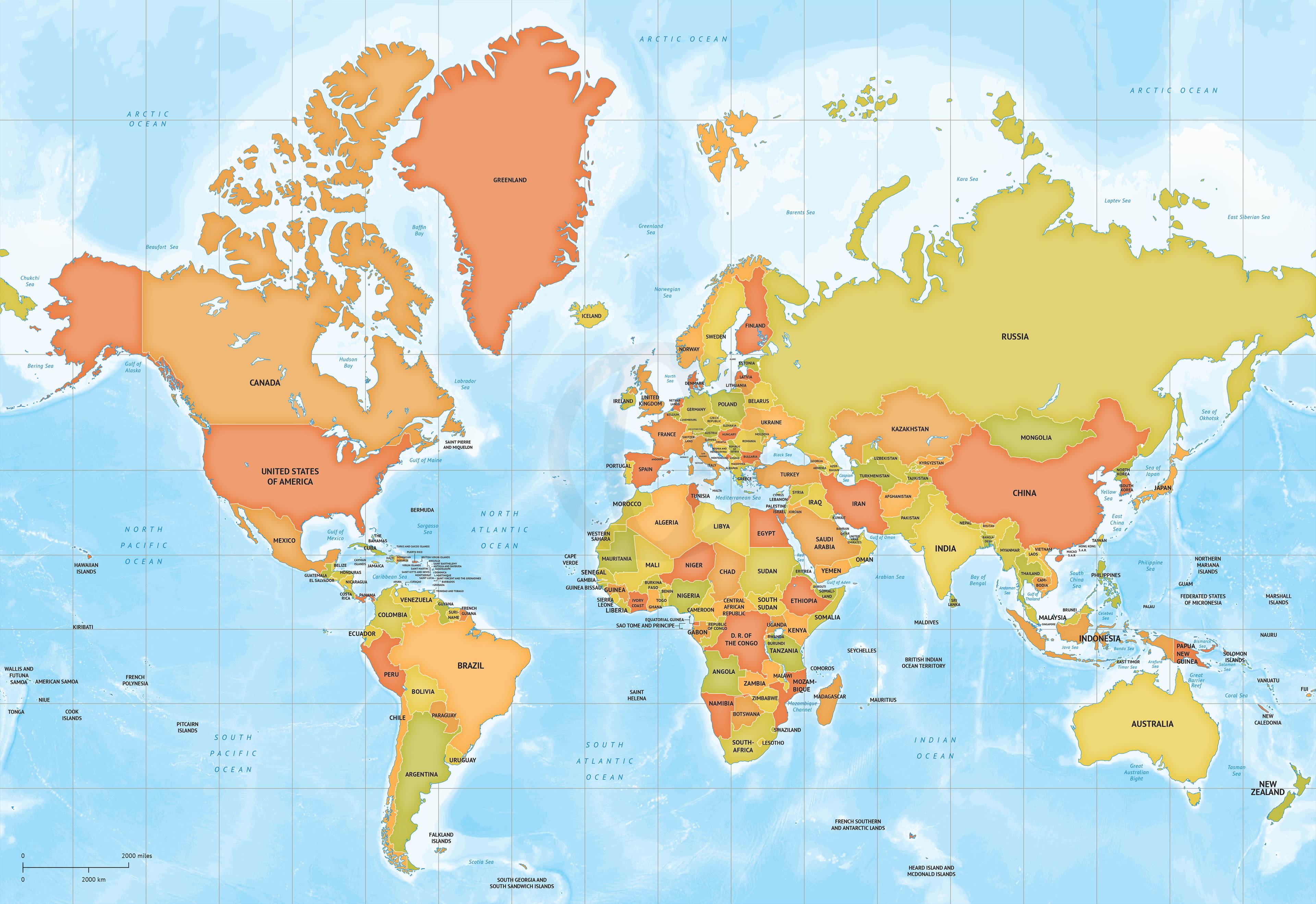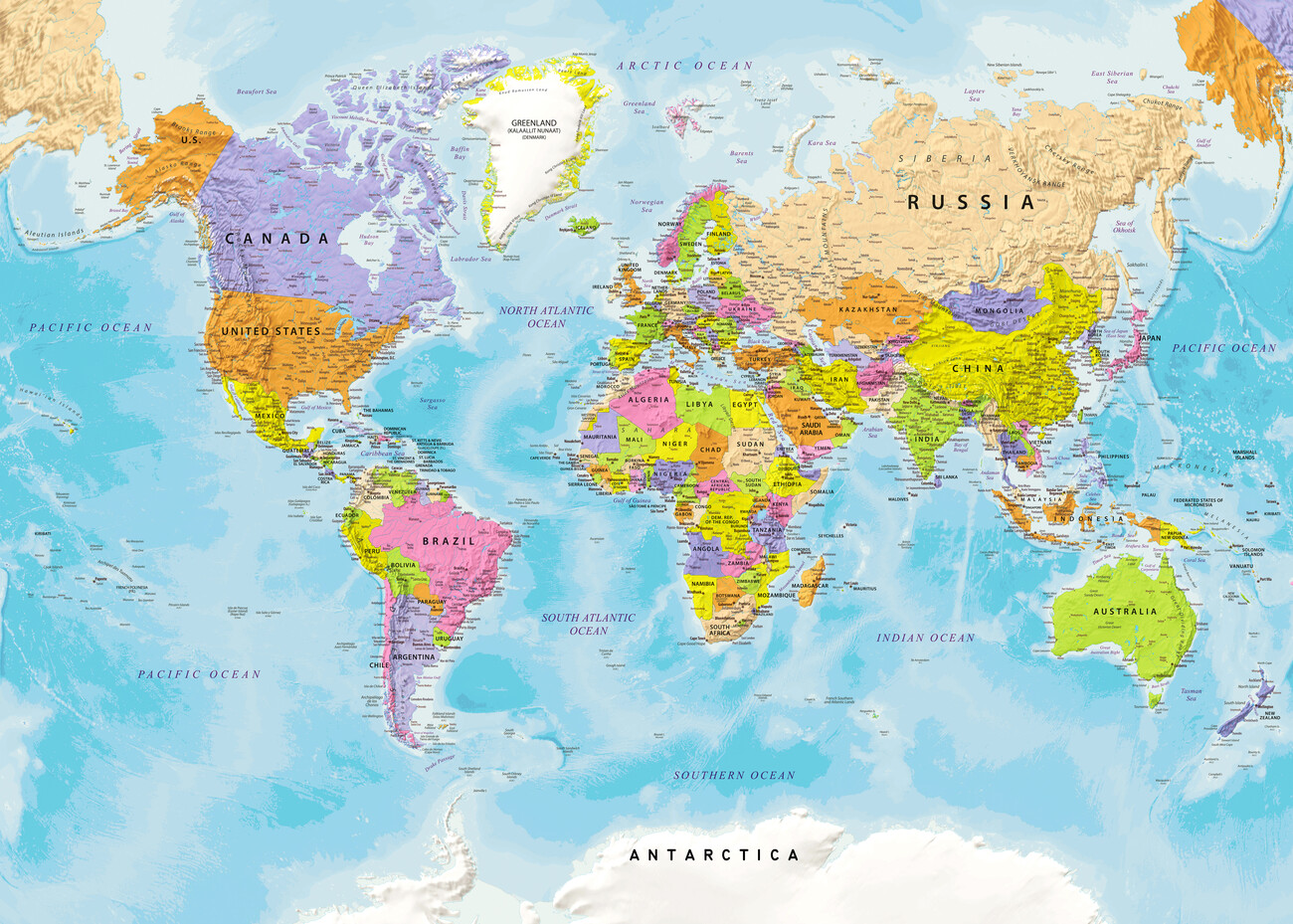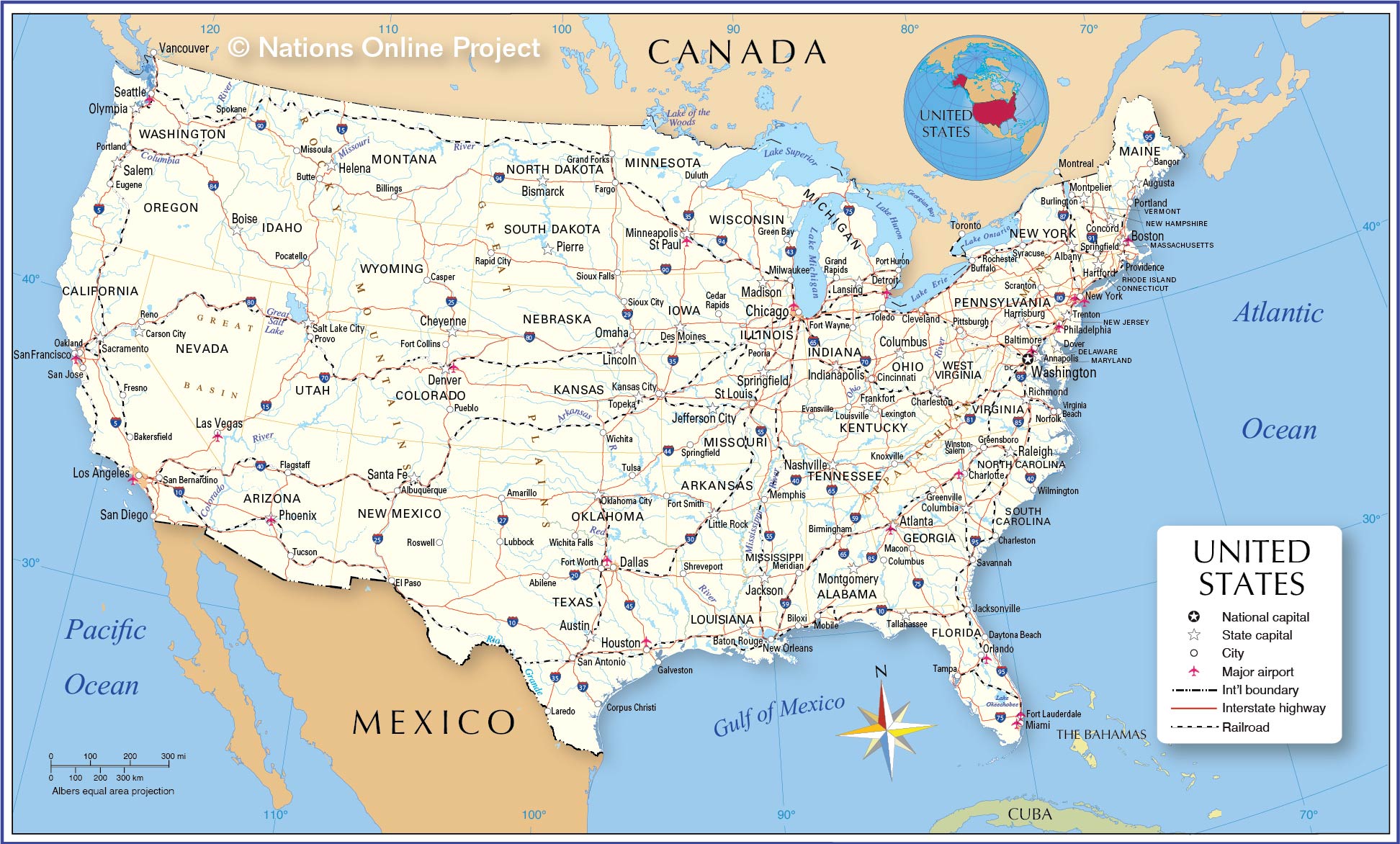Unveiling The Map: Exploring The Israel-Iran Geographic Distance
Table of Contents
- Understanding the Core Distances: Air vs. Ground
- Geographical Footprint: Israel vs. Iran in Scale
- Travel Time and Logistics: Bridging the Gap
- Historical Context and the Shaping of Borders
- Strategic Implications of Proximity
- How to Calculate the Distance Yourself: Tools and Methods
- Mapping the Route: Visualizing the Journey
- Beyond the Numbers: The Human Element
Understanding the Core Distances: Air vs. Ground
When discussing the distance between two points on a map, it's crucial to differentiate between various types of measurements. The most direct and often cited is the "bird fly" or shortest air travel distance. This represents a straight line across the earth's surface, ignoring any geographical obstacles or political boundaries. For the **map of Israel and Iran distance**, this figure provides a baseline for understanding their physical separation. According to available data, the air travel (bird fly) shortest distance between Israel and Iran is approximately **1,789 kilometers (km)**, which translates to about **1,112 miles**. This is the most direct path an aircraft or a missile would take if no detours were necessary. It's important to note that this is a theoretical straight-line distance, often calculated between central points or capitals, providing a general sense of proximity. However, there's another figure that sometimes appears in distance calculations: **1,558 km (kilometers) and 593.2 meters**, or **968.5 miles**. This specific measurement is often cited as the distance between a specific point in Iran (with longitude 51.417655 and latitude 35.657655, likely near Tehran) and a specific point in Israel (with longitude 35.207655 and latitude 31.767655, likely near Jerusalem). This discrepancy highlights that while the "bird fly" distance offers a general idea, more precise calculations between specific cities or geographical coordinates can yield slightly different results. These differences often reflect the exact starting and ending points used in the calculation, or whether the calculation accounts for the curvature of the Earth more precisely for specific coordinates. Regardless, both figures underscore a significant, but not insurmountable, geographical gap between the two nations.Geographical Footprint: Israel vs. Iran in Scale
Beyond just the distance separating them, understanding the relative sizes of Israel and Iran provides crucial context when looking at the **map of Israel and Iran distance**. The sheer scale difference between these two nations is quite remarkable and often overlooked in discussions focused solely on their geopolitical tensions. The first thing to note is that Iran is much, much bigger than Israel – around **75 times bigger**. To put this into perspective, Iran is one of the largest countries in the Middle East, boasting a vast landmass that includes diverse terrains from deserts to mountains, and a significant coastline. Its territory spans approximately 1.6 million square kilometers (about 630,000 square miles). In stark contrast, Israel is a relatively small country, with a total area of roughly 22,072 square kilometers (about 8,522 square miles), including the areas under its control. This vast difference in geographical footprint means that while the **map of Israel and Iran distance** might seem substantial, Iran's expansive territory means that its various strategic assets, military bases, or population centers could be located at varying distances from Israel's borders or key areas. This scale difference also influences military strategy, resource availability, and population distribution for both countries. The sheer size of Iran provides it with strategic depth, while Israel's smaller size necessitates different approaches to defense and security.Travel Time and Logistics: Bridging the Gap
Understanding the **map of Israel and Iran distance** also involves considering the practicalities of travel, particularly by air. While direct flights between the two nations are not a reality due to political circumstances, hypothetical travel times provide insight into the logistical implications of their separation. If one were to travel with an airplane, assuming an average speed of 560 miles per hour, from Israel to Iran, it would take approximately **1.99 hours to arrive**. This calculation is based on the shortest air travel distance of 1,112 miles. This relatively short flight time underscores the reality that, from an aerial perspective, the two countries are not geographically isolated from each other. Modern aviation technology and speed make the journey between their respective airspaces a matter of just a couple of hours. This short travel duration has significant implications, particularly in strategic and military contexts. It means that the time available for response or interception in the event of an aerial incursion is limited. For civilian travel, if relations were different, this short flight time would make direct air routes highly convenient, facilitating trade, tourism, and cultural exchange. The ease with which this distance can be traversed by air highlights the interconnectedness of the region, despite the current political divides. Understanding this travel time is crucial for appreciating the strategic dynamics at play when analyzing the **map of Israel and Iran distance**.Historical Context and the Shaping of Borders
The current **map of Israel and Iran distance** is not merely a static geographical fact but a product of historical processes that shaped the modern Middle East. The 20th century was a period of profound transformation in the region, witnessing the dissolution of empires and the formation of several new nation-states. Prior to the 20th century, much of the Middle East was under the control of the Ottoman Empire. Following World War I and the collapse of the Ottoman Empire, new borders were drawn, often by external powers, leading to the establishment of various independent or semi-independent entities. This era saw the formation of several new nations, including Saudi Arabia, Jordan, Lebanon, and Syria. Iran, which had been previously known as Persia for centuries, also underwent significant internal changes and solidified its modern national identity during this period, though its borders were largely established earlier. The State of Israel was formally established in 1948, following the UN partition plan and the end of the British Mandate for Palestine. This event fundamentally reshaped the political landscape of the Levant. The creation of these distinct national entities, each with its own sovereignty and borders, set the stage for the current geopolitical configuration. The distance between Iran and Israel, therefore, is a consequence of these historical demarcations, which placed them as distinct, non-contiguous states within the broader Middle Eastern region. Understanding this historical backdrop is essential for appreciating why the **map of Israel and Iran distance** exists as it does today, defining their separate national spaces.Strategic Implications of Proximity
The **map of Israel and Iran distance**, while significant, is not so vast as to preclude strategic considerations regarding their proximity. In the volatile geopolitical landscape of the Middle East, even distances of over a thousand kilometers carry profound strategic implications, particularly concerning military capabilities and regional stability. One critical aspect is the range of modern weaponry. Troops stationed in the Middle East, including those of various nations, are often within striking distance of ballistic missiles that Iran has stockpiled. This means that despite the geographical separation, Iran's missile capabilities can theoretically reach targets across a significant portion of the region, including Israel. This capability introduces a layer of deterrence and potential threat that constantly factors into regional security calculations. Furthermore, the concept of "proximity" extends beyond direct borders to include the presence of proxies and allied forces. Both Israel and Iran have interests and influence that stretch across the Middle East, often leading to indirect confrontations in countries like Syria, Lebanon, or Yemen. This "proxy warfare" means that while direct military conflict across the **map of Israel and Iran distance** is a major concern, the more frequent engagements occur through intermediaries in third countries. Recent events have underscored this, with reports of a fragile ceasefire being in place between Israel and Iran following days of missile exchanges, and even targeted attacks by the United States on Iranian nuclear facilities, further illustrating the interconnectedness of their strategic environments despite the miles separating them. The distance, therefore, is not a barrier to geopolitical friction, but rather a parameter within which strategic competition unfolds.How to Calculate the Distance Yourself: Tools and Methods
For those curious about verifying the **map of Israel and Iran distance** or exploring other global separations, numerous online tools and methods are readily available. These resources allow anyone to calculate distances, plan routes, and visualize geographical relationships with ease. One of the most common and accessible methods is using online mapping services. Platforms like Google Maps offer a robust "distance calculator" or "route planner" feature. To find the distance from Iran to Israel, or vice versa, you would simply start by entering your desired start and end locations in the calculator control. For instance, you could enter "Tehran, Iran" as the start and "Jerusalem, Israel" as the end. Once entered, you can select the "show map option" to visualize the route and see the calculated mileage distance. These tools typically provide both driving distances (if a road route exists) and straight-line "as the crow flies" distances. Beyond general mapping services, there are dedicated "worldwide distance calculator" websites. These specialized tools often provide more detailed information, including air line distances, travel duration estimates for various modes of transport, and even flight distances between specific airports. They are designed to give precise measurements in both kilometers and miles, and many offer interactive maps that display the route. So, whether you want to know the distances for your Google road map or simply view a map with the mileage distance between Israel and Iran to plan a hypothetical trip, these digital resources make geographical calculations readily accessible to the general public. They empower users to explore the **map of Israel and Iran distance** and countless other global connections with just a few clicks.Mapping the Route: Visualizing the Journey
Visualizing the **map of Israel and Iran distance** through interactive maps offers a clearer understanding of their geographical relationship than just numerical figures alone. These maps not only show the straight-line distance but can also illustrate potential air corridors, significant landmarks, and the geopolitical context of the region. An interactive map can display the route between Iran and Israel, or more specifically, between major cities like Tehran and Jerusalem. When you use a distance calculator or mapping tool, it typically shows the distance in kilometers and miles and then overlays this information onto a map. This visual representation helps to grasp the scale of the separation and the countries that lie between them, such as Iraq, Syria, and Jordan. While a direct road map for travel between Iran and Israel is not practically available due to political reasons, the concept of a "travel route / road map" can still be applied theoretically to understand the geographical path. These maps are invaluable for strategic analysis, travel planning (for other routes in the region), and educational purposes. They allow users to zoom in and out, pan across the landscape, and see how the distance relates to surrounding countries and geographical features. For instance, an interactive map can highlight that the air travel shortest distance of 1,789 km or 1,112 miles represents a path that would likely traverse the airspace of neighboring nations. Understanding the **map of Israel and Iran distance** visually helps to contextualize the challenges and opportunities presented by their geographical separation, providing a more holistic view than mere numbers can convey.Beyond the Numbers: The Human Element
While the **map of Israel and Iran distance** is primarily discussed in terms of kilometers, miles, and strategic implications, it's vital to remember the human element that underlies these geographical facts. The numbers represent a physical separation, but they also reflect the lives of millions of people who inhabit these lands and are impacted by the geopolitical dynamics. The distance isn't just about military ranges or flight times; it's about the lack of direct human connection, cultural exchange, and economic ties that might otherwise flourish between two significant nations. For ordinary citizens, the geographical distance, combined with political barriers, means that travel, tourism, and even simple communication are often impossible. The rich histories and diverse cultures of both Iran (Persia) and Israel (the Levant) have much to offer each other, yet these interactions are severely limited. Furthermore, the discussions surrounding the **map of Israel and Iran distance** often involve "news" about "conflict," "war," or "tensions." These headlines, while reflecting serious geopolitical realities, can sometimes overshadow the everyday lives of people who wish for stability and peace. The distance, in this context, becomes a symbol of separation, not just geographical but also political and interpersonal. Understanding the human dimension adds depth to the purely numerical analysis of the **map of Israel and Iran distance**, reminding us that behind every kilometer and mile are communities, families, and individuals whose lives are shaped by the relationship between these two powerful nations.Conclusion
The **map of Israel and Iran distance** is a multifaceted concept, extending far beyond simple measurements. We've explored how the shortest air distance of 1,789 km (1,112 miles) defines their physical separation, while specific city-to-city calculations like 1,558 km (968.5 miles) offer more granular insights. We've seen the dramatic scale difference, with Iran being approximately 75 times larger than Israel, and understood that hypothetical air travel between them would take less than two hours. The historical context of 20th-century nation-building provides the backdrop for their current borders, and their geographical proximity carries significant strategic implications, particularly concerning missile ranges and regional proxy conflicts. Thankfully, modern digital tools make it easy for anyone to calculate and visualize these distances. Ultimately, while the numbers are crucial, the human element reminds us of the profound impact of this geographical and political divide on the lives of millions. We hope this comprehensive overview has shed light on the various dimensions of the Israel-Iran distance. What are your thoughts on how geography influences international relations? Share your insights in the comments below, or explore more of our articles on geopolitical dynamics in the Middle East.- Johnny Carson Son
- Was Usain Bolt Born With That Name
- Iran Gdp 2024 Estimate
- Uncut Maza Online
- Sotwe T%C3%BCrbanl%C4%B1 T%C3%BCrk

World Map Wallpapers, Pictures, Images

Cartina Political world map ǀ Cartine di città e mappe del mondo sul

Map Of Usa States With Cities - When Is The First Day Of Spring 2024